You’d be forgiven for thinking Dark Devotion is just another Death’s Gambit. While the titles do look similar, there’s still room in the underdeveloped 2D Souls-like Metroidvania subgenre. And frankly, Dark Devotion is a great addition to that genre’s growing catalog.
Rather than a clone or a rehash of the same thing, Dark Devotion serves as an excellent counterpoint to Death’s Gambit, revealing how a few changes in design can create a different experience in the same genre.
Simply put, if you love pixel art or like a truly challenging dark fantasy game, Dark Devotion is going to work for you — whether you care about the Souls games or not.
Die, Pray, Die
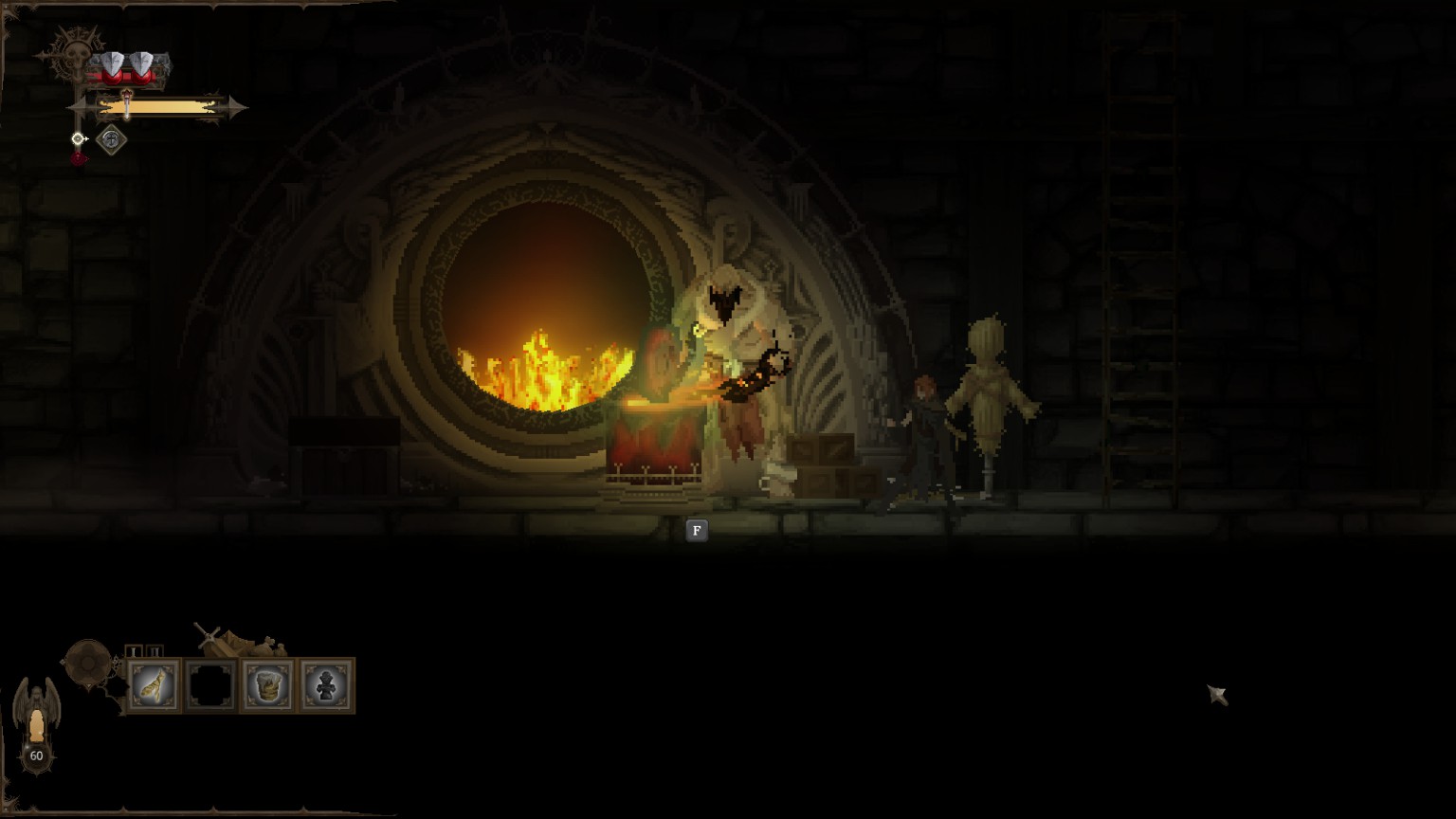 The real hero is this guy who tirelessly re-forges my sword when I die
The real hero is this guy who tirelessly re-forges my sword when I die
Although the inspiration behind the game’s combat style is quite clear, Dark Devotion actually reverses the expected formula in many ways. Rather than losing your experience and skills, you lose your equipment and items on death.
In an interesting take on the genre, this entry follows an NES-style formula where all damage to your character is calculated the same. Getting hit by a sword thrust from a shambling skeleton is the same as getting hit by a swinging ax trap or getting punctured by an arrow from across the screen.
The result is that both combat and trap avoidance revolve heavily around stamina management while dodge-rolling or blocking. Of course, you won’t always time everything right, so that’s where armor and health come in. Keep in mind, though, these are essentially the same thing since all attacks deplete 1 unit of armor or health.
Your mysterious female Templar starts Dark Devotion with Level 3 armor and a full 3 health, which may erroneously lead you to the belief that this is a Souls-like you can actually play without constantly dying.
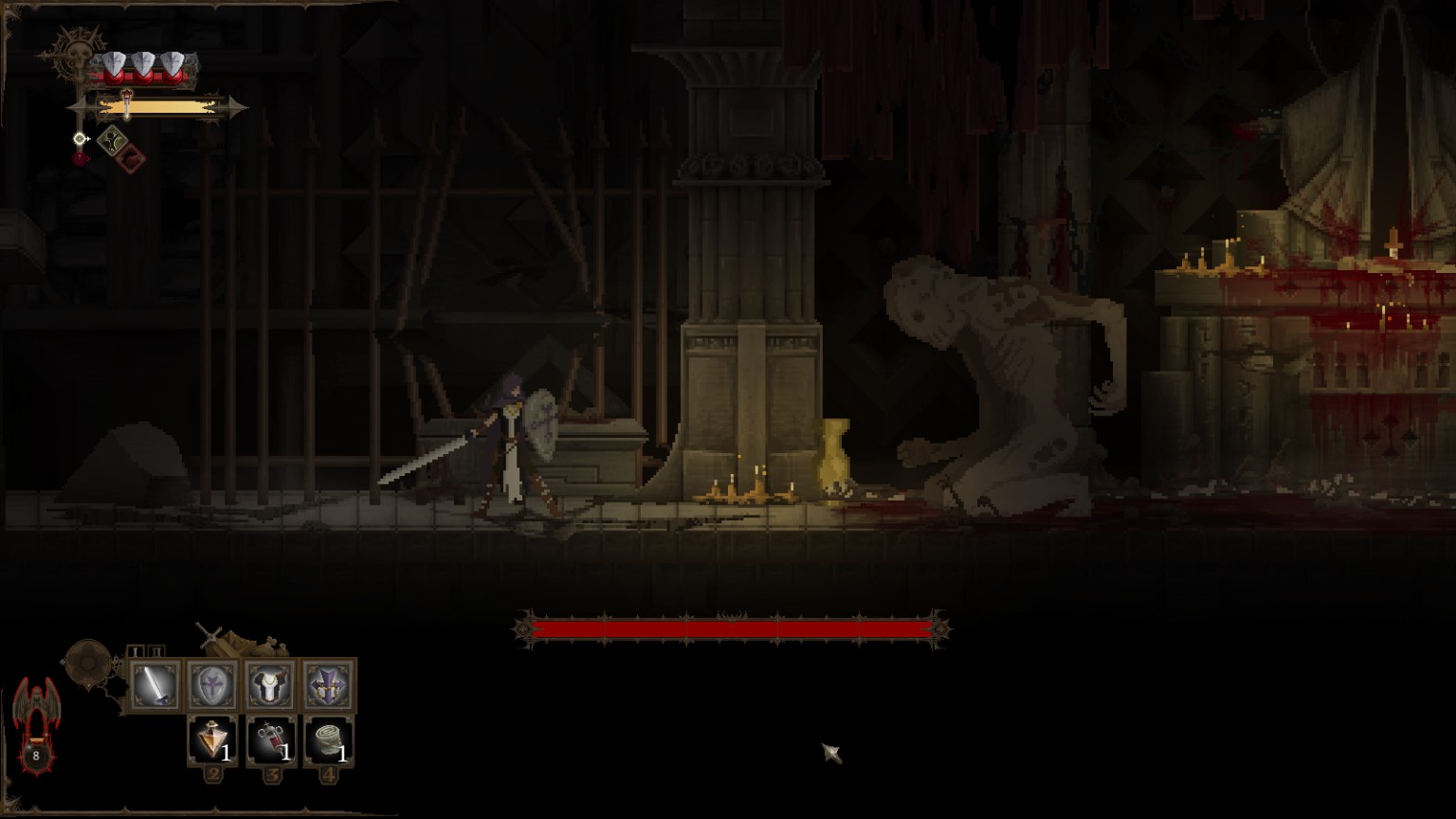 Behold my beautiful gleaming armor and polished sword.
Behold my beautiful gleaming armor and polished sword.
Nothing can stop me!
But of course, that’s not the case at all. Get ready to die, and die a lot.
After learning Dark Devotion‘s mechanics, you immediately get ganked by an unstoppable creature and have to start over at the bottom of the totem pole with threadbare cloth, minimal health, and a pathetic sword that’s better suited to slicing bread.
Unlike overly difficult games such as Darkest Dungeon, Dark Devotion is actually fairly generous with healing poultices and armor repair sets. However, it’s still pretty easy to die, so don’t think this is the dreaded easy mode that Souls fans hiss and boo at whenever it’s mentioned.
There is a way you can reduce the unrelenting difficulty of the traps, however; you can turn the brightness way up! Sure, it’s completely anathema to the game’s design and style since “Dark Devotion” is both literal and figurative. Regardless, the option is there if you’re about to smash your screen to bits because you landed in another spike pit or didn’t quite see the sharp glinting edge of that spear thrusting down from the ceiling.
Exploring A 2D World (And Killing Everyone You Meet)
While trying (and likely failing) to not get sliced, hacked, or burned to death, there’s a large world map to explore in Dark Devotion, which is a bit hampered by the game’s odd checkpoint system.
With this system, you can link any one single shrine back to the main game hub. The catch it that you can only link one at a time.
When you find new shrines, you have to decide which one to keep linked for teleportation and which one to unlink. In a way, it sort of adds another tactical element to the game, but it will also result in frustration if you get tired of constantly dying while trying to link a different shrine.
In a callback to the Souls style, the main game loop consists of finding bits of lore, learning how to progress through current parts of the map, dying, and doing it all over again.
The world map is static, but loot and rune drops are randomized. This means you’ll often get different equipment and, consequently, have to try out different tactics on each run while memorizing trap and creature locations.
While all enemy attacks do the same amount of damage, the reverse is not true. You’ll constantly be on the hunt for weapons to increase your damage output. Well, before you die and have to find new ones all over again.
Different play styles are accommodated by varying weapon types like the sword, scythe, flail, two-handed claws, and bow. Personally, I’m a fan of the giant two-handed swords, which slow attack but provide slightly longer reach.
To avoid a constant RNG-fest where you never know what you will be using, some weapons, armor, and even consumable items show up at the smithy and can be re-equipped each time you die. Unfortunately, it is very unclear which specific items remain available at the Smith after dying and which ones don’t.
At the moment, I still have no clue how that system works. Based on some of the game’s forum posts, it seems like other players are scratching their heads over this one as well.
Shambling undead, giant monsters, and elite armored creatures make up on half of the obstacles you deal with while searching for better equipment.
In proper 2D style, Dark Devotion adds an array of devastating and dastardly traps that revive the truly challenging platforming qualities found in games of the SNES/NES era — but minus the jumping.
There’s an important reason to ditch any sort of jump animation: stamina is more crucial than health, both in combat and in puzzling out the moves needed to get past a trapped hallway.
Constant death also ties in as an important mechanic here. If you’ve jumped down a ledge to a lower area, for example, there’s typically no way back up, forcing you to move forward.
Measuring The Souls Effect
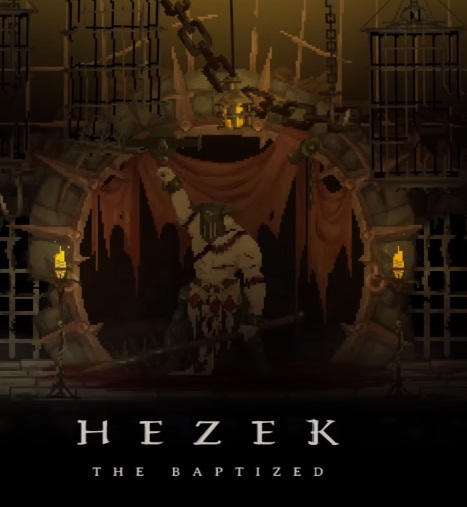 Constant death, no jumping, memorizing attack animations: this all sounds familiar, and it should.
Constant death, no jumping, memorizing attack animations: this all sounds familiar, and it should.
As you might expect, the bosses are also incredibly hard and utterly vile (but in a good way).
From huge fetus monsters abandoned at bloodstained altars to a giant who has been flagellated to shreds and chained to the wall (whose arm rips off when he drops to half health so he becomes disgustingly mobile), you are going to see some things in this game, that’s for sure.
Overall, the bosses are more interesting in terms of aesthetics and design than Death’s Gambit — other than perhaps the out-of-left-field robot sniper battle in that particular game.
Personally, I’m in love with the variety and the design of bosses, and I love the way they connect to the lore, even if some are going to strain your patience to the breaking point.
When there’s no jumping, limited stamina, and a restricted field of view brought on by the game’s constant darkness, throwing action RPG style boss encounters at you feels flat out unfair.
When a boss spawns multiple enemies for you to deal with and flings unseeable bullet-hell projectiles from off-screen, it’s less an issue of “git gud” and more an issue of “How many times are you willing to re-try this boss before you murder someone?”
Finally, there’s one other source material analog worth mentioning. As with most of the Souls style games, there’s no pause option available. It simply comes with the territory but frankly, it’s a design decision I don’t really understand. There is no multiplayer element to this game, so there’s no reason not to be able to pause. You can pause in Sekiro, for God’s sake.
For me, it’s not even an issue of needing a breather to re-think my strategy — it’s an issue of having a toddler who frequently pulls me away from a game so I can’t always just stand there waiting to be murdered by wandering monsters and lose all my progress yet again.
Dark Devotion: The Bottom Line
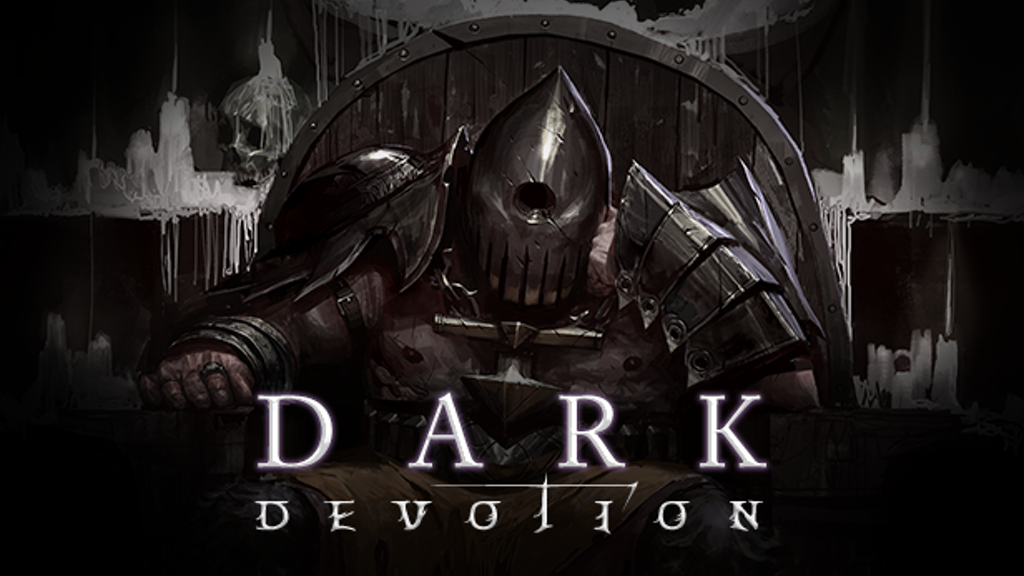
Pros:
- Smooth controls
- Excellent dark atmosphere
- Great twist on the Metroidvania/Souls-like/Rouge-like style
Cons:
- There’s hard and then there’s unfair; sometimes Dark Devotion is the latter
- The relentlessly dark aesthetic sometimes gets in the way of the gameplay
- The checkpoint system is kind of annoying
Whether Dark Devotion is meant for you will likely boil down to whether you like the visual flair and dark aesthetic of the game.
As a fan of grimdark fantasy where there are no good guys, I found the atmosphere to be absolutely spot on. From prayer acting as a profane and selfish act to the prevalence of fatalistic and evil Templars, Dark Devotion‘s tone feels right.
The control scheme might also play into your decision here, as these 2D throwback titles can feel really clunky when they try to emulate an earlier era of gaming. Luckily, that’s not an issue here. Even with very limited controls and mechanics, the dodge rolling, blocking, and attacking all feel very smooth.
There’s one caveat on that front, however — there were major controller support issues ahead of launch, such as buttons randomly remapping for no apparent reason. They have largely been addressed with a day-one patch, although it’s not 100% fixed yet.
In terms of overall length, Dark Devotion ends up a fairly long experience for an indie 2D game — expect 12 or more hours if you are awesome at this style, or even up to 20 if you’re still trying to git gud.
When you add it all together, this is a killer entry in the 2D genre, although some the insanely difficult bosses and map checkpoint design may temper your enjoyment.

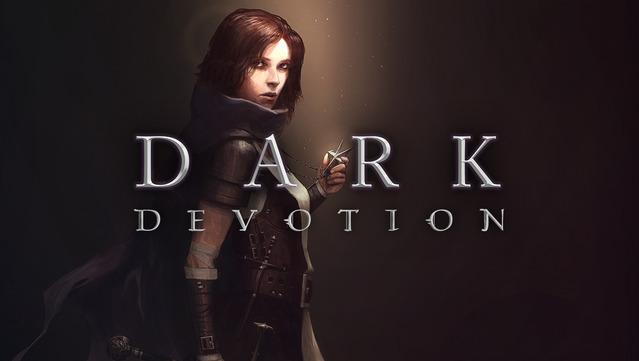
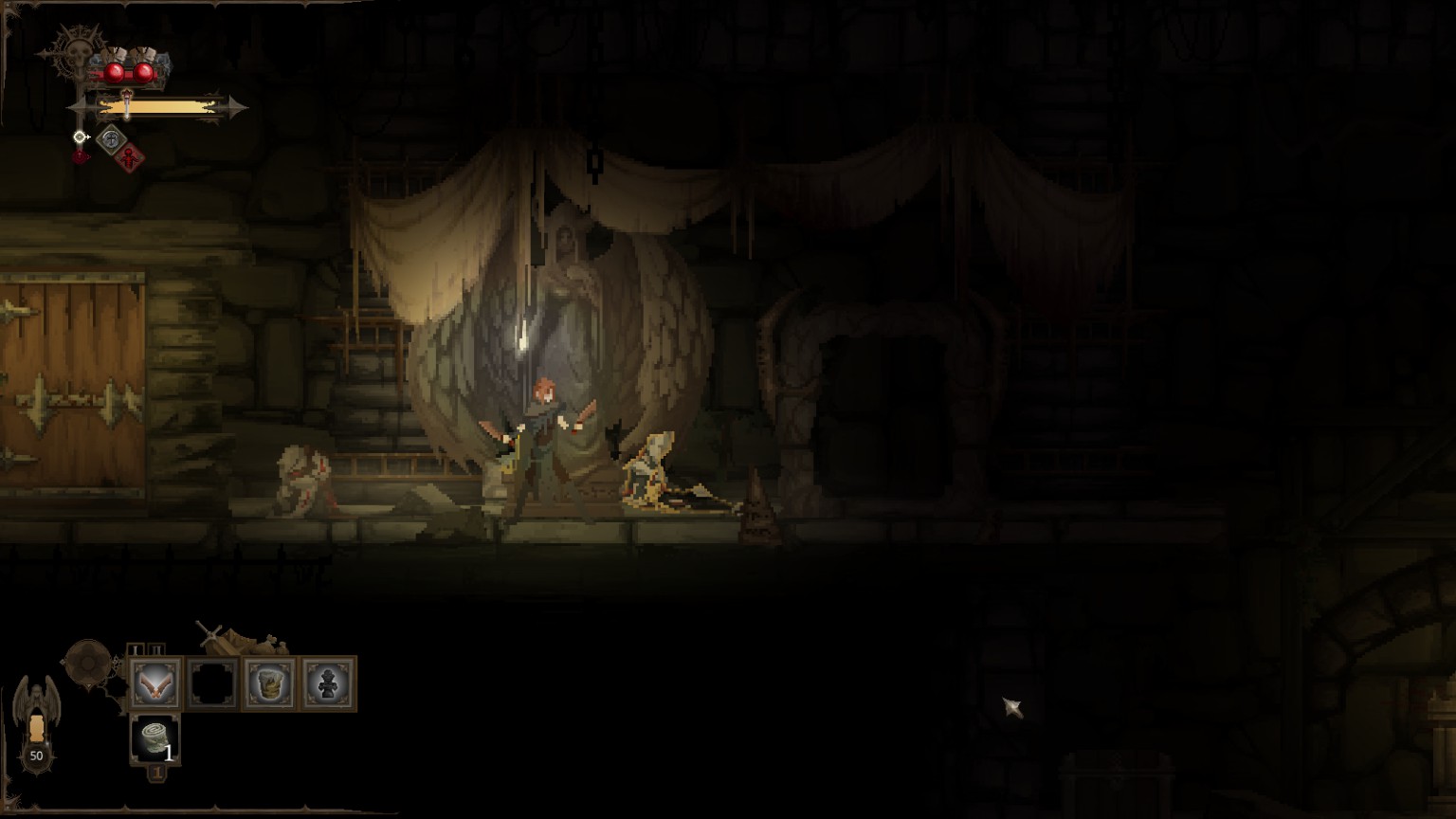
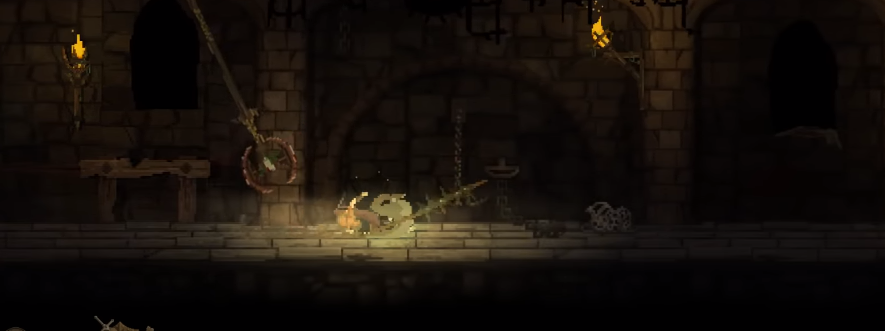








Published: Apr 25, 2019 04:05 pm